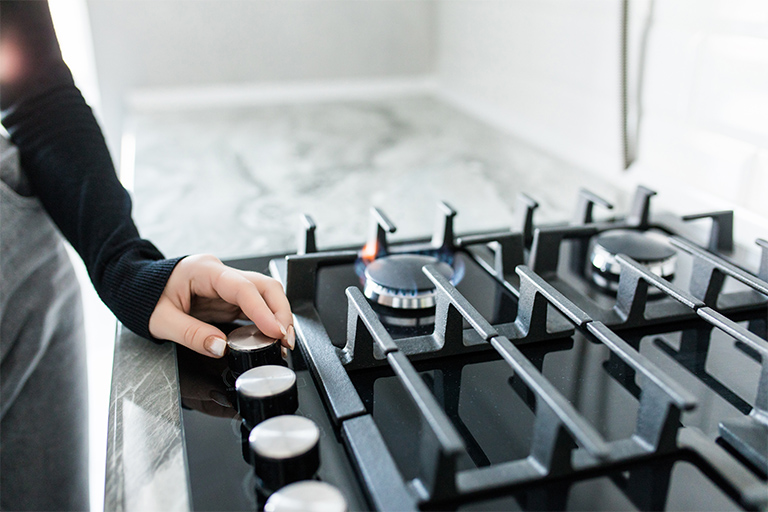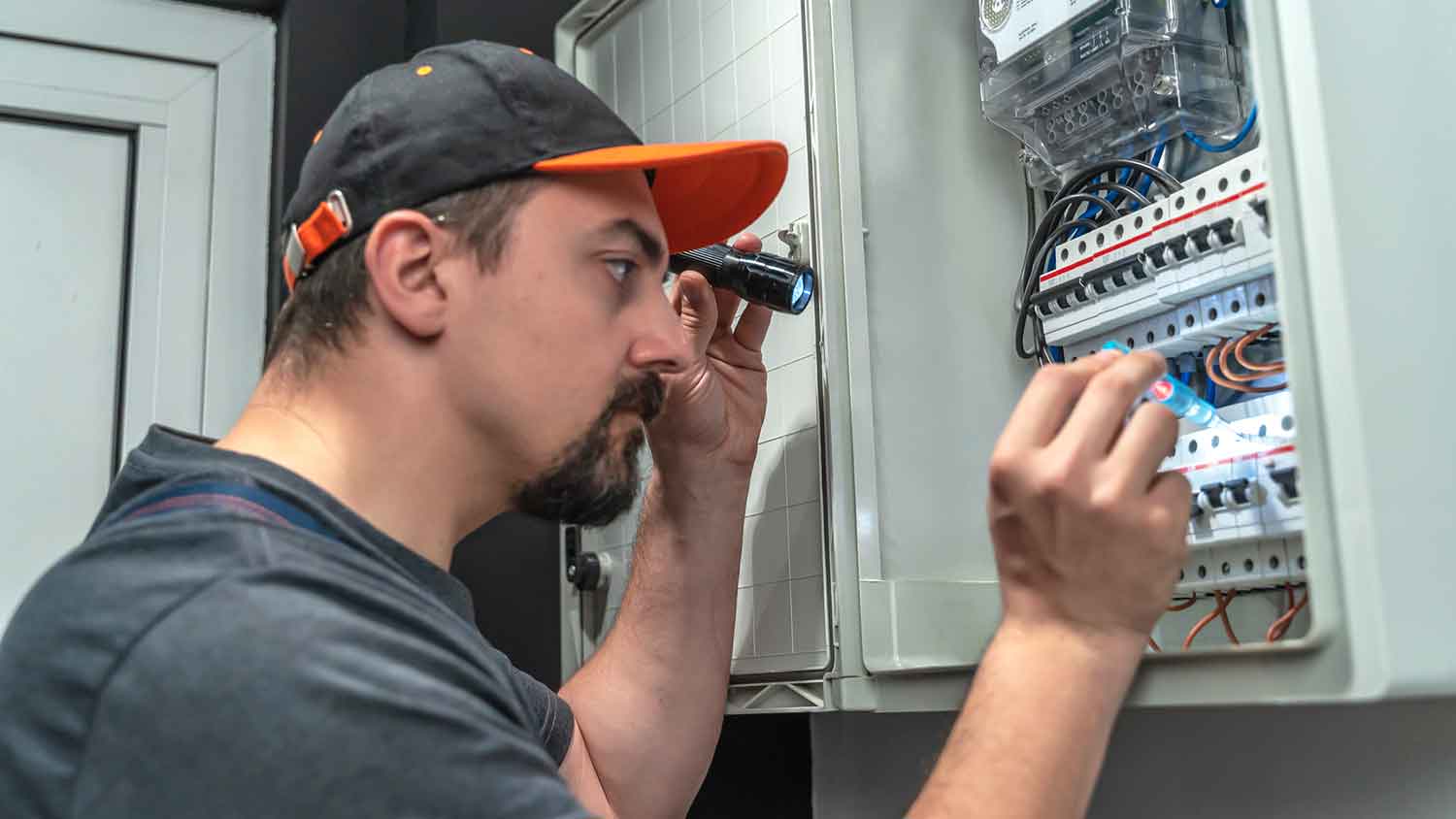
Discover the cost to install a gas cooktop. Learn about average prices, key cost factors, and tips to save on your gas cooktop installation project.
Here's why your oven keeps tripping you up with a tripped breaker


If your oven keeps tripping the breaker, unplug the appliance immediately to prevent fires and damaged appliances.
An oven tripping a breaker can either be caused by a faulty part within the oven or an electrical issue in your home.
While an electrician can fix some causes of your oven tripping the breaker, an appliance repair expert can fix others.
In older homes, circuit overload and frayed wires are common causes of ovens tripping breakers.
If your oven keeps tripping the breaker, this is a serious matter that needs to be addressed ASAP to avoid fire dangers at your home. While the problem is serious, the fix can sometimes be simple. Here's a look at how to troubleshoot why your oven is tripping the breaker repeatedly.
DIY oven repair can be extremely difficult without prior professional experience. Consider tapping into a pro's expertise to ensure the job is completed safely and correctly.
A circuit breaker is an electrical switch in your home that's designed to protect an electrical circuit from damage caused by excess electrical current. When they sense faults, circuit breakers interrupt the electrical flow. While it can be frustrating when an appliance suddenly shuts off, this is actually an indicator that your circuit breaker is working just as it should to protect your home's electrical system from fire damage.
Did you just start to experience a tripping breaker after getting a new oven? The new appliance could be triggering circuit overload. Circuit overload happens when an appliance needs more current than your home's current electric circuit can handle. While it's more common with pools, hot tubs, and other appliances that draw electricity heavily, it could happen with something as basic as a stove. Circuit overload could also be an issue if you've recently increased the number of appliances in use in your kitchen. For example, adding a microwave or toaster oven could cause your appliance load to draw more electricity than your current circuit can handle.
There are several ways to correct the issue when an oven keeps tripping the breaker due to circuit overload. The simple fix is to move one or two appliances to a new circuit that can handle the additional load. If your household has simply outgrown its current electrical load, it may be time to bring in an electrician to upgrade your electric panel. This is often necessary in older homes with older panels with limited circuits. By adding a new panel with additional circuits, you can enjoy stable and steady power to your kitchen appliances. On average, electricians charge $50 to $100 per hour for labor. Upgrading an electrical panel can cost between $800 and $4,000 in most homes.

If the circuit breaker's wiring is coming into contact with another wire or metal part, this accidental contact is called a ground fault. When a ground fault occurs, electricity is directed to the wrong place. Common reasons why this might happen in your kitchen include:
Faulty oven
Insulation breaking down
Corrosion or moisture
Ground movement
Improper wiring
If you believe you have a ground fault, it's best to call an electrician to handle the situation. You should also keep the oven unplugged until the problem can be fixed. The most common fix for a ground fault is to repair or replace the faulty portion of your circuit.
Frayed or broken wires could be the reason your oven keeps tripping the breaker. While frayed wiring is a more common problem in homes with older electrical systems, rodents chewing at wiring can cause issues in any home. If you also notice flickering lights, dimming lights, or visible scorch marks surrounding your kitchen outlet, it's more likely that your tripped breaker is caused by damaged wires.
Unfortunately, rodents chewing through your wires is an electrical fire waiting to happen. The most important thing you can do is to shut off the power supply to the affected area of your home. With the power disconnected, you can safely cover any exposed or frayed wires with electrical tape. This type of repair should be left to licensed local electricians. If you want to prevent recurring wire damage by bringing in pest control experts, pest control services cost about $171 on average.

Your oven's terminal block is located right in the center of the appliance. You've probably never taken a good look at this feature because it’s hidden away behind your oven's back panel. This is the hub of electrical activity in your oven because it's where its power cord connects to the electrical circuitry. A faulty, loose, or corroded terminal block can lead to power fluctuations that are strong enough to trip your home's breaker.
While you may be tempted to open up your oven's back panel to see if your terminal block looks damaged, you'll want to avoid handling this task by yourself unless you're already an expert at repairing appliances. In some cases, the terminal block may simply have a loose connection caused by loose screws. As one of the most complicated parts of an oven, the terminal block can easily be damaged with one wrong move. Unlike breaker issues that require the help of an electrician, a defective terminal block in an oven is something that can be fixed by local appliance installers or repair technician for a cost somewhere between $50 and $150 per hour. However, repair costs can vary based on whether you have a convection vs conventional oven.
Your oven's fan plays an important role in maintaining an even temperature throughout the oven during baking sessions. If the fan stops working, the buildup of heat that occurs could trigger your breaker. Leading up to the breaker tripping, you may notice that your food is cooking unevenly if you have a broken oven fan.
If your oven fan has stopped working properly, the most common way to fix the problem is to replace it with a new fan. The first step is sourcing a replacement fan for your oven model. With the oven unplugged, you'll need to remove the door in order to remove the back plate located inside your oven. After unscrewing the plate, you can replace the broken oven fan with a new one. Like the other fixes on this list, replacing a broken oven fan is something that's best handled by an appliance repair professional. Oven repair cost that includes fan replacement averages $190.
From average costs to expert advice, get all the answers you need to get your job done.

Discover the cost to install a gas cooktop. Learn about average prices, key cost factors, and tips to save on your gas cooktop installation project.

Discover the average dishwasher installation cost, key price factors, and tips to save on your project. Get transparent, expert-backed estimates.

Get transparent refrigerator repair cost info. Learn what impacts price, compare repair vs. replacement, and find ways to save on your fridge repair.

Using your stove can cause smoke, smells, and grease to build up in your kitchen and home. Find out how much CFM your range hood needs to kick them to the curb.

You have options for disposing of old appliances, like your refrigerator, freezer, washer or dryer. Use this guide to learn what to do with old appliances.

A washer that leaks water may have a faulty door seal, gaskets, hoses, pumps, or other parts. Keep reading to find out why your washing machine is leaking water.